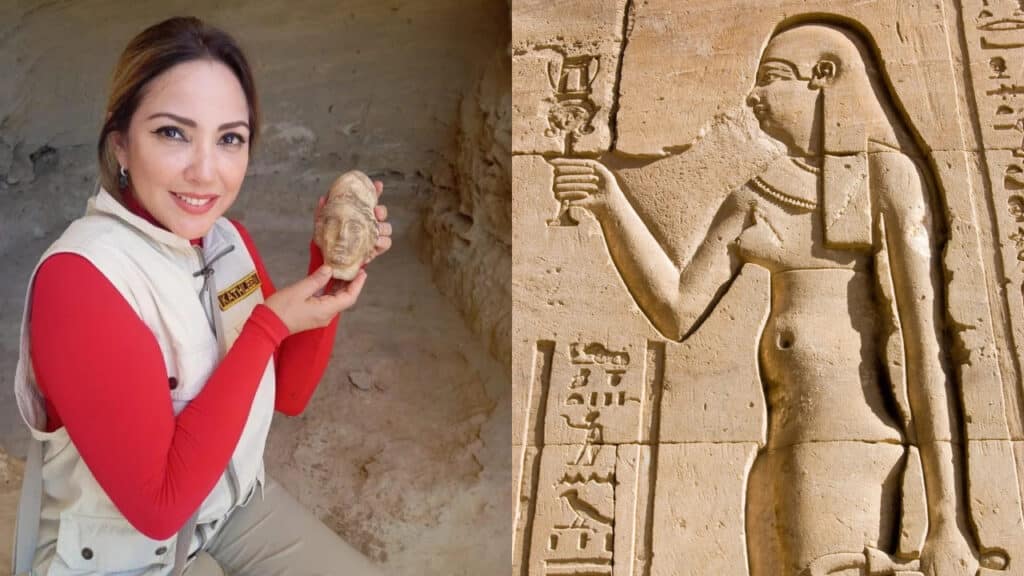‘I Swore to Die for My Country—And Left My Daughters Behind’: Inside the Powerful Debut Novel of a Puerto Rican Veteran
In At The Island’s Edge, debut author C.I. Jerez crafts a poignant and powerful narrative. One that delves into themes of trauma, family, and the strength found in cultural roots. The novel is inspired by Jerez’s own experiences. She is a mother who enlisted to serve in the army during the Iraq and Afghanistan wars. At The Island’s Edge follows Lina LaSalle, a combat medic returning to Puerto Rico in search of healing for herself and her young son. Through this emotional journey, Jerez addresses vital social issues while celebrating the resilience of women, mothers, and Puerto Rican culture.

The Emotional Toll of War and PTSD
One of the most profound themes in At The Island’s Edge is the devastating impact of war on the mental health of those who serve. Lina’s struggle with PTSD is depicted with raw honesty, showing how trauma can fracture even the strongest individuals. How can a combat medic still consider themselves a medic, a healer, when they are also forced to take a life in the heat of battle?
Lina is welcomed home as a military hero, but does not feel like one. Instead, her emotions are in turmoil, compounded by guilt and self-doubt. Her journey highlights the challenges many veterans face when trying to reintegrate into civilian life. Especially when compounded by the challenges of parenthood. Jerez portrays this struggle authentically, shedding light on a reality often overlooked in mainstream media.
Reflecting on her own experience, Jerez shared, “It was terrifying, especially because when I raised my right hand and swore to die for my country, I had two young daughters at home.” This personal connection underscores the authenticity of Lina’s struggle and highlights the emotional toll military service can take on families.
The prologue shows Lina on the battlefield. Jerez said, “I wanted to honor the men and women in our nation’s armed forces who faced similar situations to the fictional scene I created deep within my own imagination. This wasn’t about sensationalizing a battle scene, but portraying truth and sacrifice. I wanted subtlety and reality to be a superpower in this scene.”
Lina’s journey also highlights the ripple effects PTSD can have on family dynamics. Her inner turmoil often manifests in her relationship with her son, Teó, who is perceptive enough to recognize his mother’s struggles. The tension between her love for her son and her own internal battle creates a gripping emotional arc that many readers will find deeply relatable. Jerez portrays PTSD not as a solitary experience but as a condition that impacts entire families, emphasizing the importance of support networks in the healing process.
Motherhood and the Complexities of Family Dynamics
Central to Lina’s story is her relationship with her son, Teó, who has Tourette’s syndrome. Teó admits his struggle to fit in with his tics from Tourette’s by saying, “It helps most of the time, sniff, but sometimes it’s like there is another person inside me, Mamá, and I can’t stop him.”
Jerez weaves an intimate and compassionate portrayal of a mother striving to balance her own trauma with the needs of her child. Lina’s return to Puerto Rico places Teó under the nurturing care of extended family, emphasizing the power of multigenerational support, particularly during times of hardship. This multigenerational family structure is commonplace in Latino culture and demonstrates how family can provide stability and comfort, even in the face of emotional turmoil.
Jerez explained, “While I have not raised a child battling Tourette’s, I do have a child within the close ranks of our family who has been diagnosed with a neurological condition.” This deeply personal perspective allowed her to bring authenticity to Teó’s character while shedding light on the resilience of children navigating conditions like Tourette’s.
In addition to Teó, Lina reconnects with her cousin, whose own dreams were also shattered by war. This shared bond of trauma helps Lina feel less isolated in her struggle, showing that family connections can foster both strength and healing. Jerez’s portrayal of these relationships underscores the value of community in confronting personal pain and emphasizes the unique dynamics of Latinx families, where extended family plays an essential role in raising children and supporting one another.
The Power of Cultural Roots and Homecoming
Puerto Rico is more than just a setting in At The Island’s Edge; it feels like another character. Jerez writes, “There’s a famous saying in Puerto Rico my father used to quote in his darkest moments: Tanto nadar, para ahogarse en la orilla. I’ve swum so far, only to drown on the coastline.”
It serves as a symbol of Lina’s emotional and cultural homecoming. The island’s vibrant culture, rich history, and deeply rooted traditions give Lina a sense of belonging that aids in her healing journey. Through characters like Lina’s cousin and Eli, a veteran who has built a life in Puerto Rico, Jerez explores how home and heritage can mend emotional wounds.
By returning to her roots, Lina rediscovers a sense of identity and strength that helps her face her past
“I’ve lived and/or worked in Puerto Rico on three different occasions for a combined total of five years,” Jerez said. “The magic of this little island and how happy and accepted I felt each time I made its shores my home inspired me to place Lina’s journey there.” I appreciate that the book highlights three unique perspectives: Lina, who left and returned to the island; Dolores, who never left; and Eli, an American expat who has chosen to make Puerto Rico his home despite lacking traditional family ties to the island. It is such a unique way to portray the island.
Jerez skillfully portrays Puerto Rico as more than just a fun, picturesque vacation spot. In fact, one of Jerez’s favorite scenes to write involves Lina getting drunk at Puerto Rico’s La Placita (a real place). Jerez says, “I enjoyed exploring the complexities of her personality…Her sarcasm, inner defenses, and impressive instincts all come to life in this chapter, and I really enjoyed weaving together the lows and highs she experienced.” By weaving these cultural details into the narrative, Jerez presents a richly authentic portrayal of Puerto Rican life that adds depth and authenticity to Lina’s journey.
The Untold Stories of Women in Combat
Jerez’s novel fills an important gap in literature by spotlighting the experiences of women in combat. While stories of male soldiers returning from war are common, Lina’s journey provides a rare and essential perspective. As Jerez explains, “Until recently, all the post-combat stories in books and Hollywood have centered on the male experience.” By centering a female soldier’s perspective, At The Island’s Edge brings visibility to the unique sacrifices, fears, and emotional challenges women in combat endure.
Lina’s story challenges the stereotypes of soldiers as stoic and unshakable. Instead, Jerez portrays her protagonist as both vulnerable and courageous, struggling to reconcile her sense of duty with the emotional scars of war. By exploring the unique pressures faced by women in uniform, Jerez sheds light on the unspoken burden many female veterans carry long after their service ends.
Battling Stigma and Seeking Help
Lina’s decision to ask for help after battling addiction and mental health challenges underscores a crucial message about seeking support. Jerez portrays this decision as an act of strength rather than weakness. Through Lina’s vulnerability, Jerez offers a powerful reminder that resilience often stems from recognizing when help is needed and embracing the strength that comes from community and family.
I asked Jerez what one of the hardest scenes to write was, and she said, “Lina’s breakdown in the therapist’s office brought me to tears every time I had to read, edit, and review it. I don’t think I’ve ever dug so deep for any literary effort, like I did writing that chapter. It’s best explained by encouraging people to read it for themselves. I don’t think describing the scene will do it justice.”
The novel also addresses the stigma surrounding mental health in military and Latinx communities
Jerez powerfully highlights the cultural expectation of silence and self-reliance, showing how these pressures can prevent individuals from accessing the resources they need. By portraying Lina’s struggle openly, Jerez encourages readers to challenge these stigmas and embrace mental wellness as a vital component of healing.
At The Island’s Edge is a deeply moving exploration of trauma, healing, and cultural pride. C.I. Jerez masterfully crafts a narrative that reflects her own lived experiences and highlights the complexities of life after war, the power of family, and the importance of embracing one’s roots. With its richly drawn characters and poignant themes, the novel is sure to resonate with readers from all walks of life, inspiring empathy, understanding, and hope. For those seeking an unforgettable journey of courage, connection, and healing, At The Island’s Edge is a must-read.
AUTHOR: Alyssa Reynoso-Morris is a queer Afro-Latine/x Dominican and Puerto Rican award-winning storyteller, author, and motivational speaker. She is also a mother and community organizer. During the day, she works with community members, non-profit organizations, and government officials to make the world a better place. Then she puts on her writer’s hat to craft heartfelt stories. Alyssa was born and raised in The Bronx, New York, and currently lives in Philadelphia, PA, with her family. She is the author of Plátanos Are Love & Los plátanos son amor (a NCTE Charlotte Huck Recommended Read); The Bronx Is My Home; Gloriana Presente: A First Day of School Book & Gloriana Presente: De la República Dominicana al Bronx; Bold, Brilliant and Latine: Meet 52 Latine and Hispanic Heroes from Past and Present; and Pieces of Home. She hopes you enjoy her stories. You can learn more about her at alyssaauthor.com




